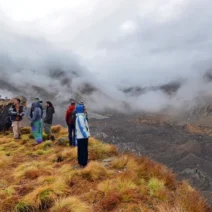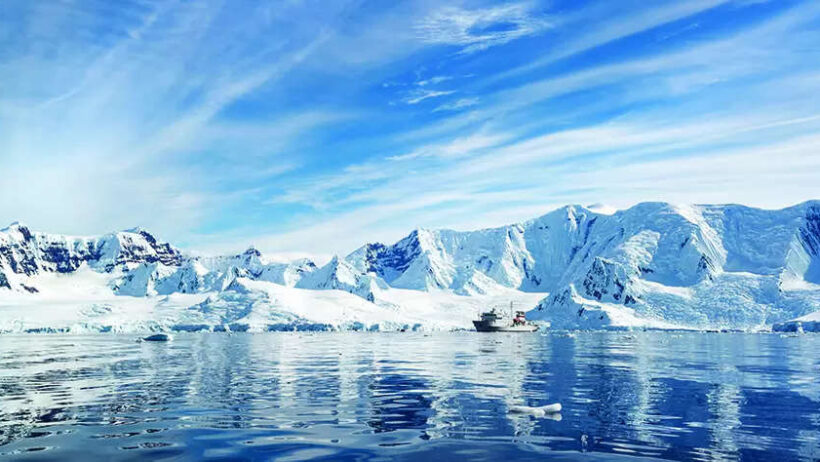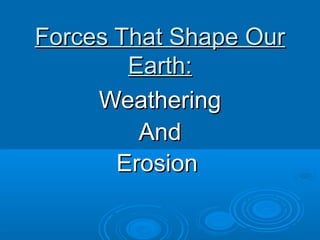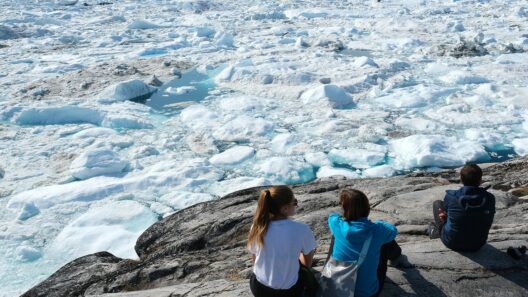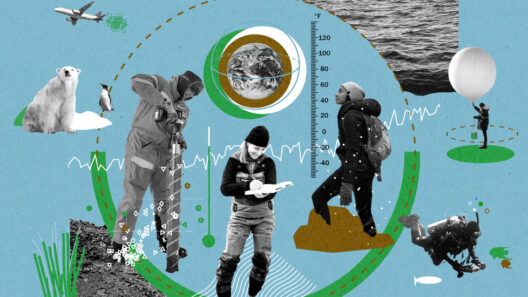Approximately 50 million years ago, the climate of Antarctica underwent a profound transformation, leading it to evolve from a temperate and relatively forested landscape into the frigid, ice-covered continent we recognize today. This dramatic change raises important questions about our planet’s climatic history and illustrates the complex interplay between geological, biological, and atmospheric processes. The following exploration dissects the numerous factors contributing to this climatic shift, while addressing a common observation: the seeming paradox of such an extreme transformation in a landmass that is tantamount to Earth’s frozen heart.
The onset of the Eocene Epoch, around 56 million years ago, set in motion significant climatic developments that would alter the trajectory of Antarctic climate. Initially, this period was characterized by warmer global temperatures, where lush forests flourished in regions like Antarctica that are now enshrined in ice. The polar climate was, at the time, much milder, supporting a diverse array of flora and fauna that thrived amid relatively temperate conditions. Fossil evidence, such as remnants of ancient trees, underscores the fact that Antarctica was once inhabited by diverse life forms, including mammals and birds.
However, this period of luxuriant growth did not persist indefinitely. Understanding the factors that led to climatic deterioration involves examining the interplay of several interrelated phenomena. A significant contributor to Antarctica’s climatic metamorphosis was tectonic activity, specifically the movement of tectonic plates which shifted the continent’s position over time. The separation of South America from Antarctica, occurring during the late Cretaceous and early Paleogene periods, played a pivotal role. This geological shift closed the Antarctic Circumpolar Current (ACC), a vital oceanic system that fosters isolation between the Southern Ocean and the warmer waters of the Atlantic and Pacific Oceans.
The closure of the ACC dramatically altered oceanic circulation patterns. As the cold Antarctic waters became further isolated, a stark decrease in heat exchange with adjacent ocean currents ensued. This cooling phenomenon initiated a feedback loop, wherein increased glaciation began to occur. The lack of warm water influx results in a snowball effect; as ice cover expanded, it reflected more solar radiation back into space, further perpetuating the colder conditions that characterized the evolving Antarctic environment.
In addition to tectonic influences, alterations in atmospheric gas concentrations also bear significance in the climate transformation narrative. Throughout the Eocene, atmospheric carbon dioxide levels were markedly higher than today, supporting a greenhouse effect that kept global temperatures elevated. However, as geological processes continued to unfold, carbon dioxide absorption mechanisms began altering the composition of the atmosphere. This entailed a gradual decline in greenhouse gases due to geological sequestration processes, potentially aided by the weathering of silicate rocks. Subsequently, as atmospheric CO2 diminished, a cooler global climate emerged, accentuating polar cooling trends.
The shifts didn’t occur in isolation; an intricate interplay ensued with Earth’s orbital parameters, known as Milankovitch cycles. These cycles, which encompass variations in Earth’s tilt and orbit around the sun, influence solar radiation distribution over the planet. During this epoch, subtle changes in axial tilt and orbit triggered fluctuations in temperature, further exacerbating regional climatic shifts, and ultimately solidifying the trajectory toward an ice-dominated Antarctic landscape.
A further factor contributing to Antarctica’s climatic evolution involves the dynamics of the global biosphere. As temperatures cooled, a cascade of ecological responses occurred, resulting in the extinction of many of the temperate flora and fauna that had thrived there. With no flora to absorb carbon dioxide and stabilize the atmosphere, the resulting perturbations only further encouraged the development of tundra and, eventually, ice sheets.
Over millions of years, the cumulative effects of geological, atmospheric, and ecological change culminated in a dramatic redefinition of Antarctica’s climatic identity. By the late Oligocene, roughly 34 million years ago, substantial ice sheets had formed, marking the transition from a formerly lush environment to the icy expanse that remains today. The development of these ice sheets signified a crucial tipping point in Earth’s climatic history, as they not only altered regional weather patterns but also impacted global sea levels, ocean currents, and even atmospheric circulation.
Today, as we scrutinize this ancient climatic narrative, it serves as a sobering reminder of Earth’s dynamic nature and the interwoven tapestry of factors that influence climate change. The historical trajectory of Antarctica illustrates the potential for abrupt climatic shifts that can transform a biome and reshape the Earth’s environmental framework. While current human-induced climate change presents its own unique challenges, the evolution of Antarctica’s climate 50 million years ago reminds us that profound changes can occur over relatively short geological timeframes, emphasizing the necessity for a deep understanding of earth systems in addressing contemporary climate issues.
In conclusion, the transformation of Antarctica’s climate half a century ago underscores a fundamental truth about our planet: it is in a state of constant flux, influenced by both natural processes and extraterrestrial forces. Awareness of these historical precedents offers invaluable insight, particularly as we navigate through an epoch marked by environmental upheaval. An appreciation of Antarctica’s past not only captivates researchers and environmentalists alike but also calls upon us to consider the fragility of ecosystems, the vulnerability of our climate, and the imperative to act in safeguarding our planet’s future.
